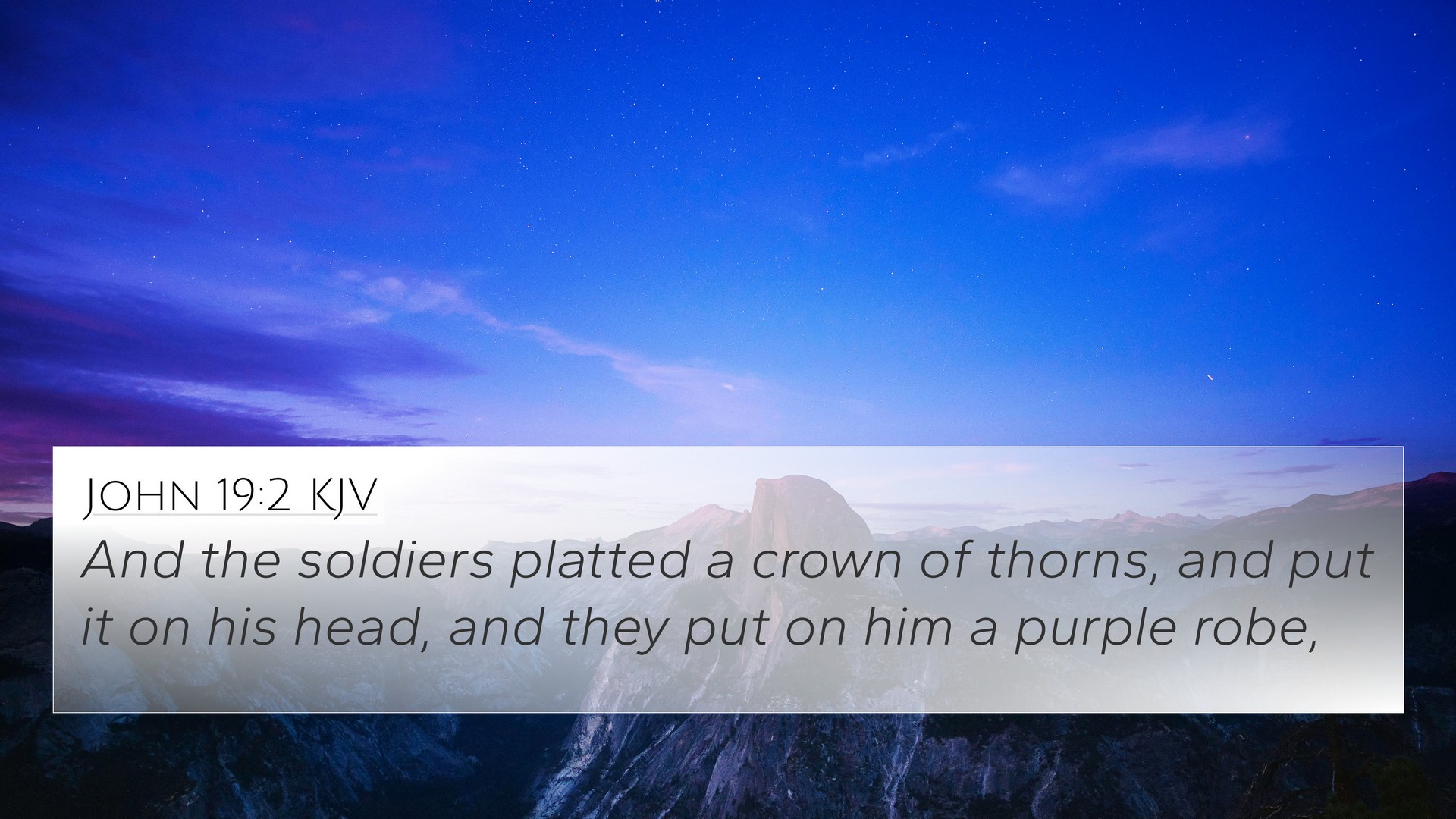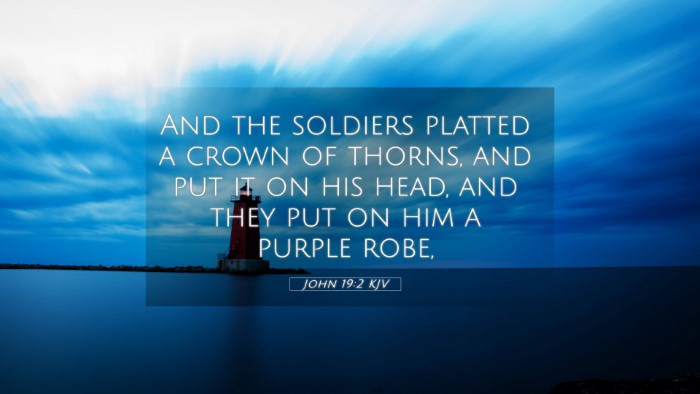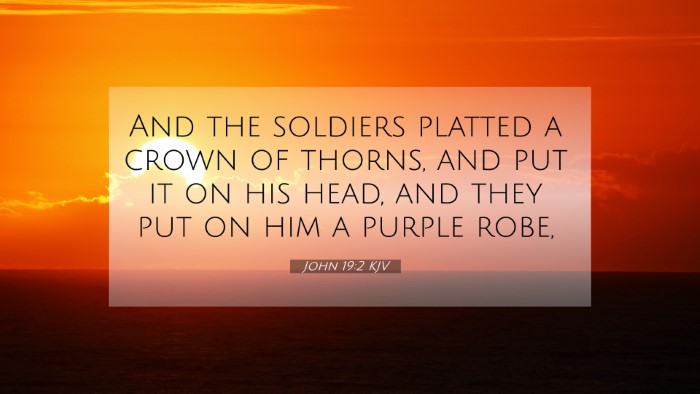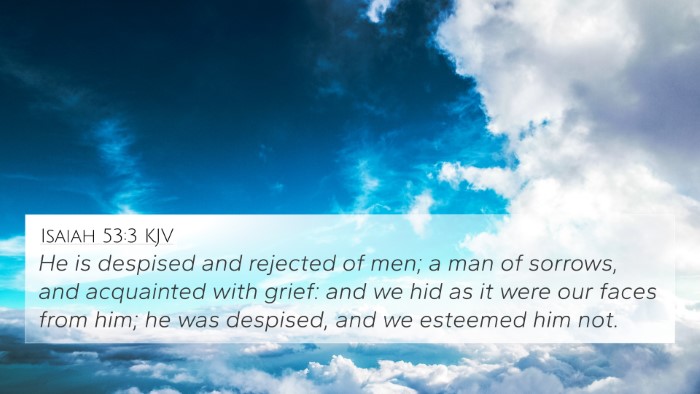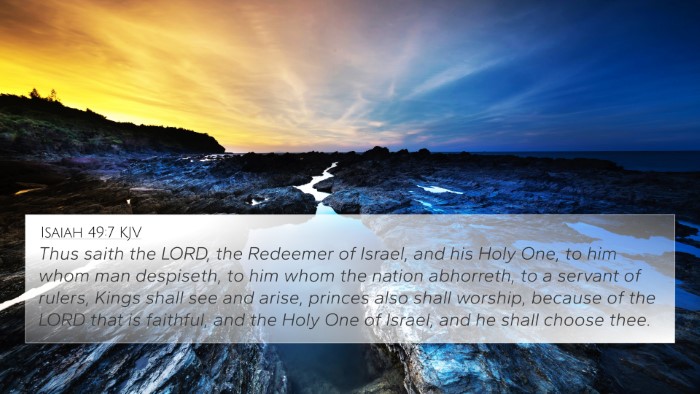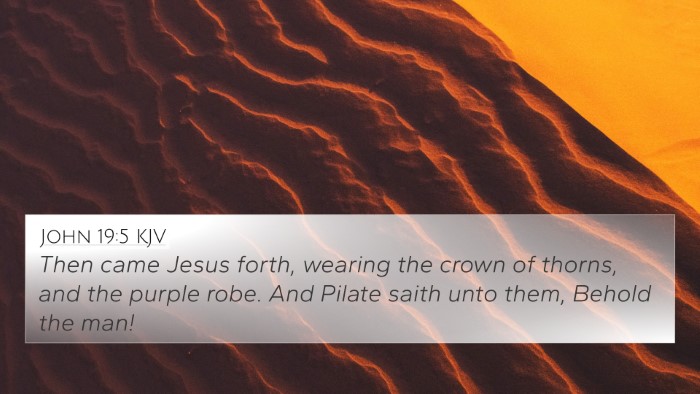Understanding John 19:2
Bible Verse: John 19:2 - "And the soldiers twisted together a crown of thorns and put it on his head and arrayed him in a purple robe."
Verse Meaning and Interpretation
This scene from John 19:2 is deeply significant within the larger narrative of Christ's passion. The actions of the soldiers are not merely acts of mockery; they represent a profound fulfillment of prophetic scripture and a foreshadowing of Christ's ultimate sacrifice.
- Mockery and Suffering: The soldiers’ actions symbolize the scorn he faced as a king, particularly the crown of thorns which demonstrates the depth of his suffering.
- Symbolism of the Purple Robe: The purple robe signifies royalty, and the mockery of this act highlights the irony of recognizing Jesus’ true kingship amidst his suffering.
- Prophetic Fulfillment: The imagery in this verse aligns with various Old Testament prophecies concerning the suffering servant that Christians believe point to Jesus.
Commentary Insights
The insights from public domain commentaries such as those from Matthew Henry, Albert Barnes, and Adam Clarke offer layers of meaning to this verse. Below is a summary of their interpretations:
Matthew Henry's Commentary
Matthew Henry emphasizes the humiliation of Christ. The crown of thorns is a powerful representation of the curse of sin while also being a stark contradiction to Christ's role as King. This humiliation serves as a crucial demonstration of his love and sacrifice.
Albert Barnes's Notes
Albert Barnes points out the historical context of Roman soldiers mocking Jesus, noting that such treatment was customary for condemned prisoners. Barnes highlights the importance of recognizing that this mockery is simultaneously a testament to Jesus' unyielding dignity and strength, as he suffered for the redemption of humanity.
Adam Clarke's Commentary
Adam Clarke provides insights into the significance of the thorns. He mentions that the crown of thorns is symbolically tied to the suffering and death of Christ, indicating the connection between sin (the curse) and Christ's sacrificial role. Clarke also connects this event to the broader narrative of the Gospels, where the themes of suffering and glory are intricately intertwined.
Bible Cross References
To deepen our understanding of John 19:2, we can explore connections with several other Bible verses:
- Genesis 3:17-19: References God’s curse upon the earth which introduced thorns as a consequence of sin.
- Isaiah 53:3-5: Describes the suffering servant, reflecting Jesus' rejection and affliction.
- Matthew 27:28-29: Similar account of soldiers mocking Jesus and placing a crown of thorns upon him.
- Philippians 2:7-8: Illustrates the humility of Christ in taking on the form of a servant and suffering for humanity.
- Hebrews 12:2: Encourages believers to look to Jesus, who endured the cross for the joy set before him.
- Revelation 5:12: Proclaims Jesus as worthy of honor, a stark contrast to his current humiliation in John 19:2.
- Psalm 22:6: The psalmist expresses shame and mockery, prefiguring Christ’s own experience during the crucifixion.
Tools for Bible Cross-Referencing
Engaging with scripture through a cross-referencing approach enriches our understanding of how different passages relate to one another. Here are some effective tools and methods:
- Bible Concordance: Helps locate key words and themes across the Bible.
- Cross-Reference Bible Study Guide: Outlines themes and provides links between scriptures.
- Bible Reference Resources: Can include charts and indices for easy navigation.
- Bible Chain References: Follow a single theme or thought through various verses.
Exploring Biblical Themes
The themes illustrated by John 19:2 provide significant insights into the nature of Christ’s atoning work and encourage believers to delve deeper into the scriptural cross-referencing process:
- How to find cross-references in the Bible: Study guided resources or print out thematic connections.
- Identifying connections between Old and New Testament: Analyze prophetic texts alongside their New Testament fulfillments.
- Links between the Prophets and Apostolic teachings: Evaluate how prophetic messages reflect in the epistles.
- Interpreting Biblical themes through cross-references: Consider how themes propagated in Old Testament narratives echo in New Testament teachings.
Conclusion
Understanding John 19:2 through these lenses—commentary insights, cross-references, and thematic connections, speaks profoundly of the humbling yet glorifying path of Christ. This intricate interplay between suffering and glory reveals the depths of Jesus' purpose and the redemptive message the Gospel conveys.
